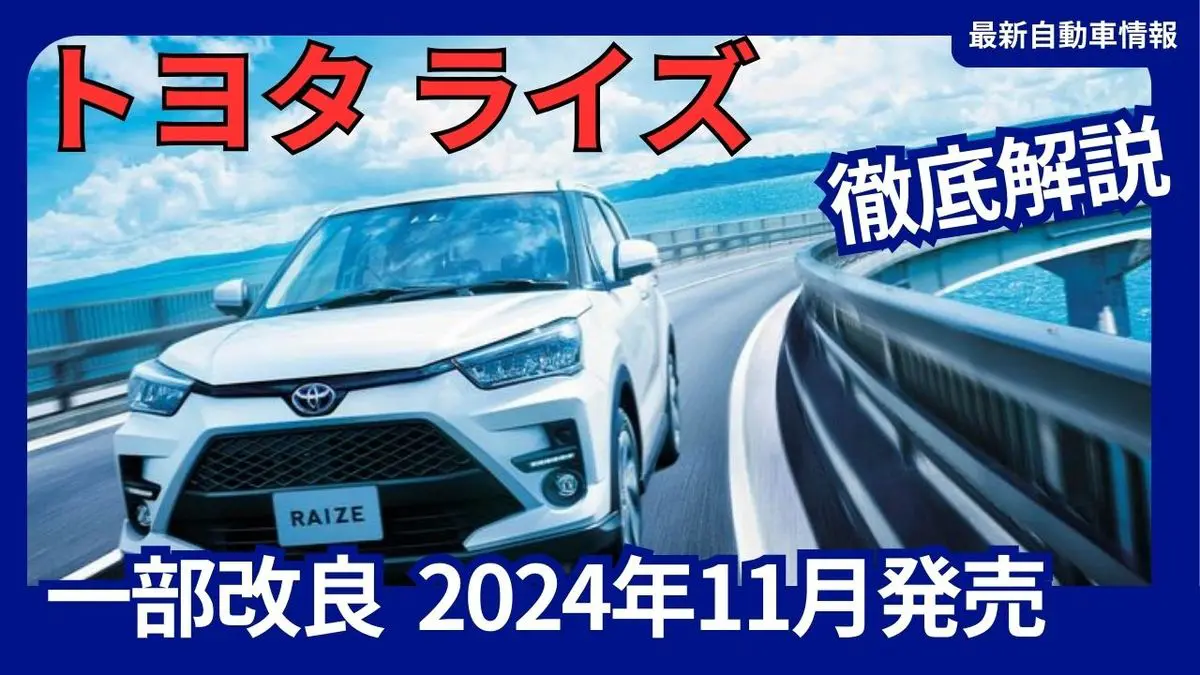
Toyota’s compact crossover SUV “Rize” will be improved and released in October 2024. This model is scheduled to have enhanced safety equipment and a price revision. It seems that information has already been received by each dealer.
It was announced on April 19, 2024 that the suspension of shipments of the Daihatsu Rocky HEV and Toyota Raize HEV models would be lifted after it was confirmed that they comply with the standards of the Road Transport Vehicle Act . Production resumed on July 17, 2024, and shipments resumed on the 18th.
Toyota’s new Raize partially improved 2024 model
In this partially improved model, two back sensors have been added to comply with the latest regulations , the number of sensors in the rear bumper has increased to four, and the display has also been changed. The cold weather specification of the 2WD model will be standardized . In addition, the price will be revised.
Toyota New Rise Partial Improvement 2024 Model Body Color
There are no changes to the body colors, with eight solid-color models and three two-tone colors available.
monochromatic
Shining White Pearl *1
Black Mica Metallic
Bright Silver Metallic
Fire Quartz Red Metallic
Natural Beige Mica Metallic
Mustard Yellow Mica Metallic
Laser Blue Crystal Shine *1
Turquoise Blue Mica Metallic
Two-tone color
Bright Silver Metallic x Black Mica Metallic*2
Turquoise Blue Mica Metallic x Black Mica Metallic*2
Shining White Pearl x Black Mica Metallic*3
*1 Dealer option: 33,000 yen
*2 Dealer option: 55,000 yen
*3 Dealer option: 77,000 yen
Toyota New Raize Partial Improvement 2024 Model Grades and Prices
Manufacturer’s suggested retail prices will be revised taking into account rising raw material prices, etc.
| grade | engine | transmission |
Drive system |
Price (10%) |
|---|---|---|---|---|
| X | 1.2L inline 3-cylinder engine |
CVT | 2WD | 1,707,000 yen |
| G | 1,857,000 yen | |||
| Z | 2,039,000 yen | |||
| X | 1.0L inline 3-cylinder turbo engine |
CVT | 4WD | 1,984,800 yen |
| G | 2,133,700 yen | |||
| Z | 2,299,200 yen | |||
| G | 1.2L inline 3-cylinder engine + motor |
e-SMART HYBRID system |
2WD | 2,163,000 yen |
| Z | 2,328,000 yen |
Toyota New Raize Partial Improvement 2024 Model Specifications
There are no changes to the engine or specifications.
| Specifications | New Rise Hybrid |
New Rise | |
|---|---|---|---|
| full length | 3,995mm | ||
| Overall width | 1,695mm | ||
| Height | 1,620mm | ||
| Wheelbase | 2,525mm | ||
| engine | 1.2L inline 3-cylinder engine + motor |
1.2L inline 3-cylinder engine |
1.0L inline 3-cylinder turbo engine |
| Maximum power | 60kW (82hp) / 5,600rpm |
64kW (87hp) / 6,000rpm |
72kW (98hp) / 6,000rpm |
| Maximum torque | 105Nm (10.7kgfm) / 3,200-5,200rpm |
113Nm (11.5kgfm) / 4,500rpm |
140Nm (14.3kgm) / 2,400-4,000rpm |
| Motor maximum output |
78kW (106hp) | – | – |
| Motor Max Torque |
170Nm (17.4kgm) | – | – |
transmission |
e-SMART HYBRID system |
CVT | CVT |
| Drive system | 2WD | 2WD | 4WD |
| Minimum turning radius | 4.9–5.0 m | ||
| Tire size | 195/60R17 | ||
| WLCT mode fuel consumption | 28.0km/L | 20.7km/L (2WD) | 17.4km/L (4WD) |
| JC08 mode fuel economy | 34.8km/L | 23.6-24.6km/L (2WD) | 21.2km/L (4WD) |
About the new RISE hybrid system “e-SMART HYBRID”
The “e-SMART HYBRID” system is composed of a newly developed “1.2L inline 3-cylinder engine (WA-VEX) + motor,” with the engine being used exclusively for generating electricity. It employs a series hybrid system that uses that electricity to run the vehicle 100% on the motor. It achieves a simple structure and compact size with a small displacement. It is a hybrid system that excels at low and medium speed driving and is suitable for small cars that are frequently used around town. It has astonishing fuel efficiency of 28.0km/L (2WD) in WLCT mode.
The generator engine is a 1.2L inline 3-cylinder engine (WA-VEX) with a maximum output of 60kW (82ps) / 5,600rpm, 105Nm (10.7kgfm) / 3,200-5,200rpm. The drive motor has a maximum output of 78kW (106ps) and a maximum torque of 170Nm (17.4kgm). The torque makes it possible to take advantage of the motor’s characteristics. The vehicle speed can be controlled by operating the accelerator only. The “Smart Pedal (S-PDL)” is adopted, which reduces the frequency of switching from the accelerator to the brake in city streets and downhill areas where acceleration and deceleration are repeated, reducing the burden on the driver and achieving a lighter ride.
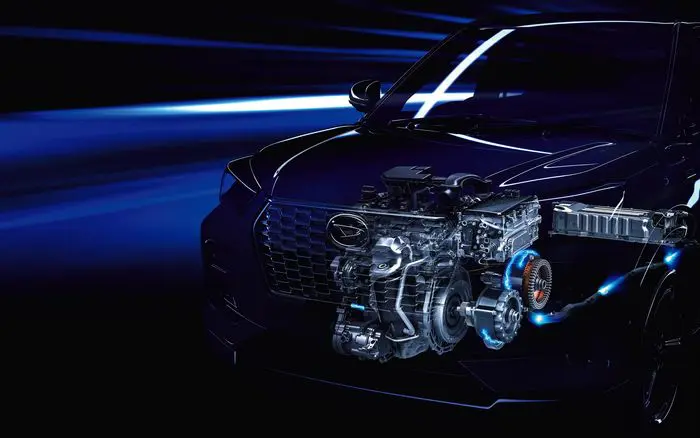
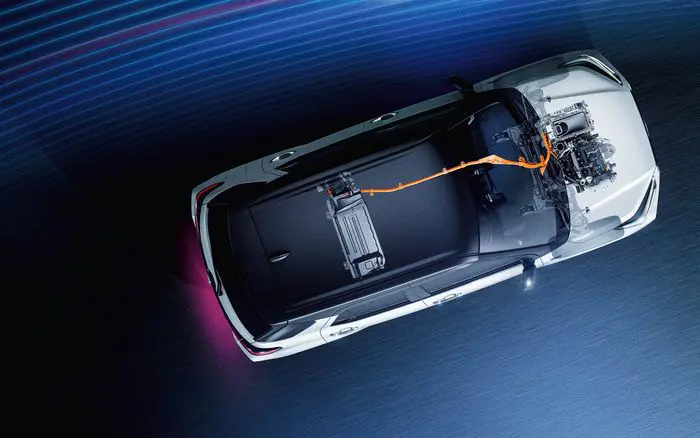
About Rise
The new “Rize” is a compact SUV that fits within the 5-number size. The exterior adopts a powerful and bold design that follows the tradition of Toyota SUVs, and is designed with an outdoor mindset as seen in the new “RAV4”. The platform is Daihatsu’s ” DNGA platform “. This is the second “DNGA” model following the new Tanto . “LED front sequential turn lamps (flowing blinkers)” are adopted in the top grade “X”.
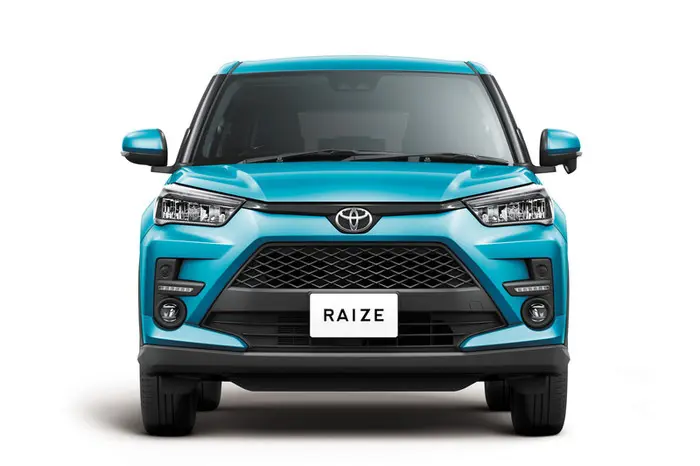
Its overall length is 3,995mm, width 1,695mm, and height 1,620mm, making it a 5-number size vehicle. It uses large 17-inch or 16-inch tires. The minimum turning radius is 4.9 to 5.0m. It also uses Dynamic Torque Control 4WD. As it is designed, developed, and manufactured by Daihatsu, it also uses the advanced technology ” Next Generation Smart Assist .”

The meter uses a 7-inch full LCD display “Active Multi-Information Meter”. The Rise exclusive “9-inch display audio” is used. Apps compatible with SmartDeviceLink and Apple CarPlay can be operated on the display.
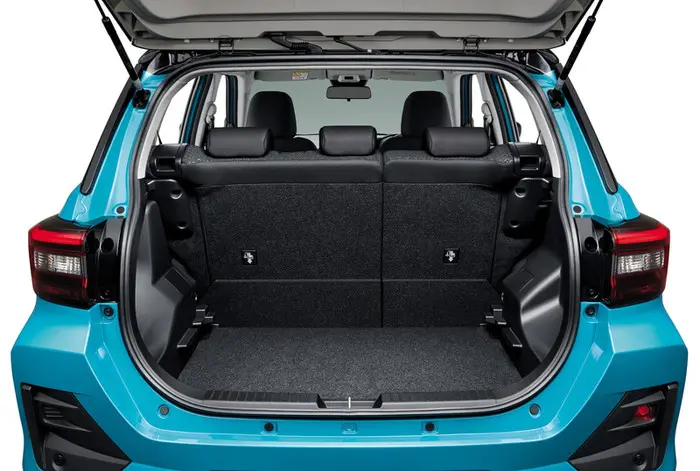
The luggage capacity is 369L.
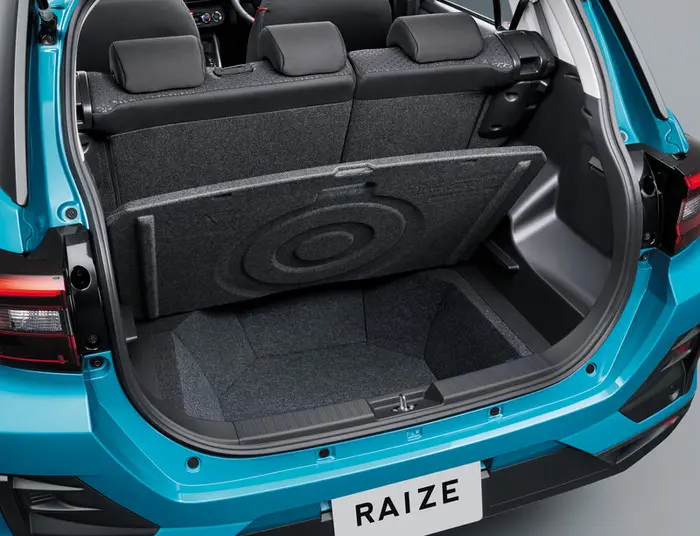
Rise comes standard with advanced technology “Next Generation Smart Assist”
The “Smart Assist III” is equipped with two cameras. It also comes with the “Next Generation Smart Assist” which adds functions such as “ACC with all-speed tracking function” (optional only for higher grades). It uses a stereo camera, supports pedestrians, and has a wider operating speed range than before. It is a “Safety Support Car S (Wide)” (Sapo Car S (Wide) eligible vehicle).
Equipped with two corner sensors on the front and rear of the vehicle , the further evolved “Next Generation Smart Assist” helps avoid accidents in close calls while driving and supports your safe driving. In addition to sonar sensors, the car is newly equipped with the world’s smallest stereo camera that does not obstruct the driver’s field of vision or headroom. It accurately captures various information such as pedestrians, preceding vehicles, and obstacles, and warns the driver or activates emergency braking.
Collision warning function / Collision avoidance support brake function ① Collision warning (for vehicles, for pedestrians) When the camera detects a vehicle or pedestrian in front while driving and judges that there is a risk of collision, it will notify you with a buzzer sound and a display in the meter.
② Primary brake (for vehicles, for pedestrians) If the system judges that there is a risk of collision, it will automatically apply a weak brake (primary brake) to encourage the driver to avoid the collision.
③ Damage reduction brake assist (for vehicles, for pedestrians) If the driver applies the brake when the primary brake function is activated, the brake assist will be activated and the braking force will be increased.
④ Emergency brake (for vehicles, for pedestrians) If the system judges that a collision is unavoidable, it will slow down with a strong brake (secondary brake). It avoids a collision or reduces damage.
Lane Departure Prevention Control Function If the vehicle is about to deviate from its lane without using its turn signal, the system warns the driver with a buzzer and a display on the meter, urging the driver to take action. It also assists the driver in steering to bring the vehicle back into the lane.
If the driver does not notice that the vehicle ahead has started moving when the preceding vehicle departure notification function is disabled and does not start moving, a buzzer will sound and the display on the meter will notify the driver.
AT false start prevention control function + false start prevention function with brake control ① Forward false start prevention control function When the stereo camera detects an obstacle such as a vehicle or wall within 4m ahead, if the accelerator pedal is pressed with the shift position in “forward”, the engine output is limited to prevent sudden start. ② Rear false start prevention control function When the sonar sensor built into the rear bumper detects an obstacle such as a wall within 2-3m behind, if the accelerator pedal is pressed with the shift position in “reverse”, the engine output is limited to prevent sudden start. Brake control has also been added.
The high beam assist stereo camera detects the brightness of oncoming headlights and automatically switches between high and low beams. This allows you to drive with high beams without having to switch between them, making nighttime driving safer even on roads with few street lights.
Adaptive Driving Beam: When driving with high beams on, if an oncoming vehicle is detected, the light in the area of the high beams that faces the oncoming vehicle will automatically be blocked.
Sign Recognition Function If the stereo camera detects a no entry sign, a notification will be displayed in the meter.
Rise Advanced Technology “Smart Assist Plus”
ACC (Adaptive Cruise Control) with full-speed following function: The stereo camera detects the speed and distance of the vehicle ahead, maintains the distance and speed between the vehicles, and follows the vehicle ahead, controlling it until it comes to a stop.
Lane Keep Control: The stereo camera detects the lane and assists steering to keep the vehicle in the center of the lane.
Parking assistance function “Smart Panorama Parking Assist” – A first for a minicar – cameras on the left and right detect the white lines of parking spaces and provide voice and on-screen guidance as well as steering assistance.
Side View Lamps When turning right or left at night, auxiliary lights that illuminate the left and right directions are turned on in addition to the normal headlamps, brightly illuminating the direction in which the steering wheel is turned.

Toyota Raize sales volume in 2024
The suspension of production has had an impact on sales in 2024, and sales have not recovered. It will be interesting to see if the improved model will bring a big recovery!
| Date | Gasoline vehicles | Hybrid vehicles | total |
|---|---|---|---|
| January 2024 | 2,130 units | 180 units | 2,312 units |
| February 2024 | 810 units | 280 units | 1,092 units |
| March 2024 | 1,430 units | 450 units | 1,874 units |
| April 2024 | 3,700 units | 50 units | 3,756 units |
| May 2024 | 2,790 units | 10 units | 2,799 units |
| June 2024 | 2,280 units | 2 units | 2,286 units |
| total | 13,140 units | 972 units | 14,119 units |
Toyota Raize registration numbers Source: Japan Automobile Dealers Association
Toyota Raize related articles
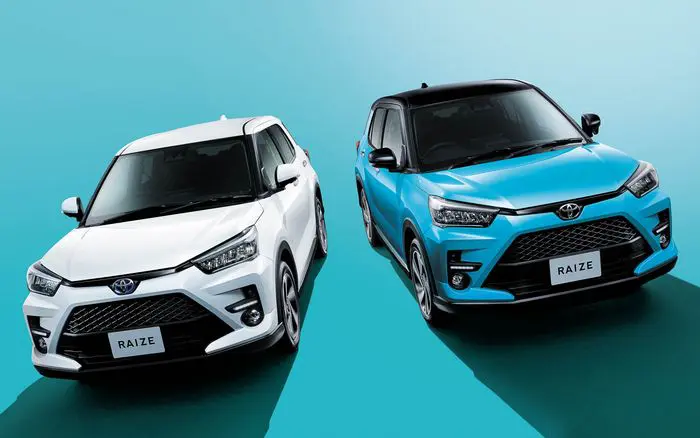
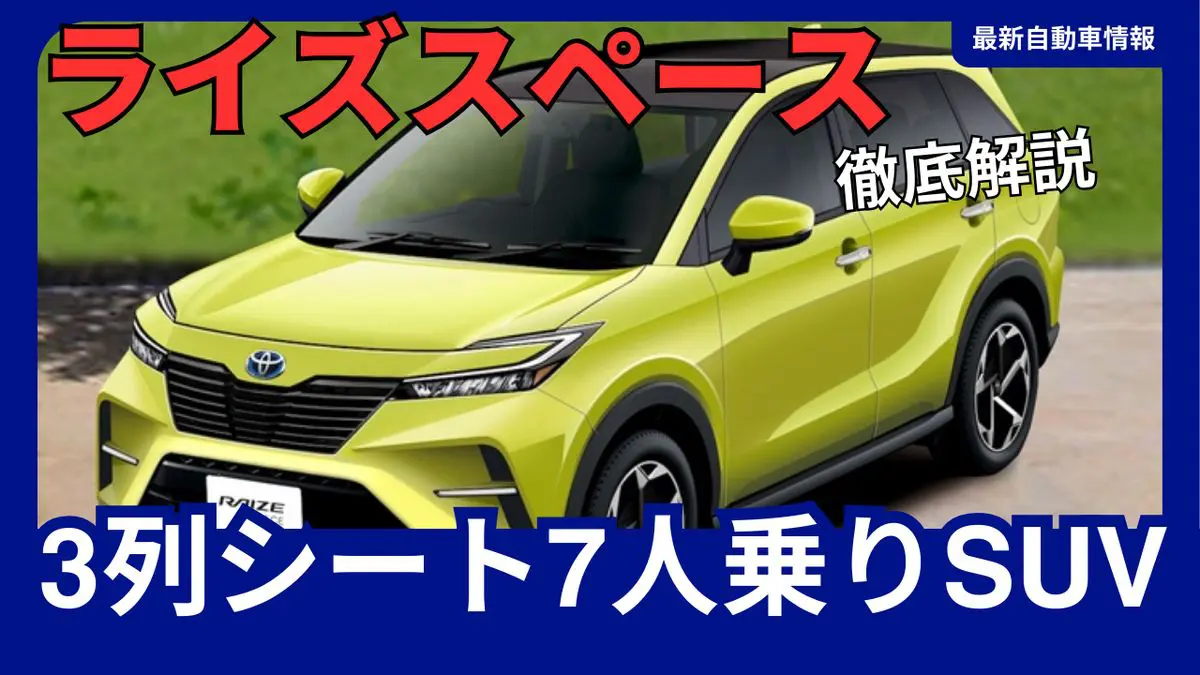

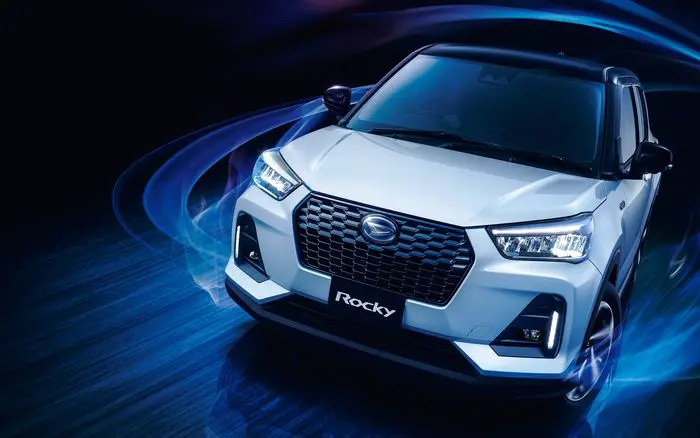

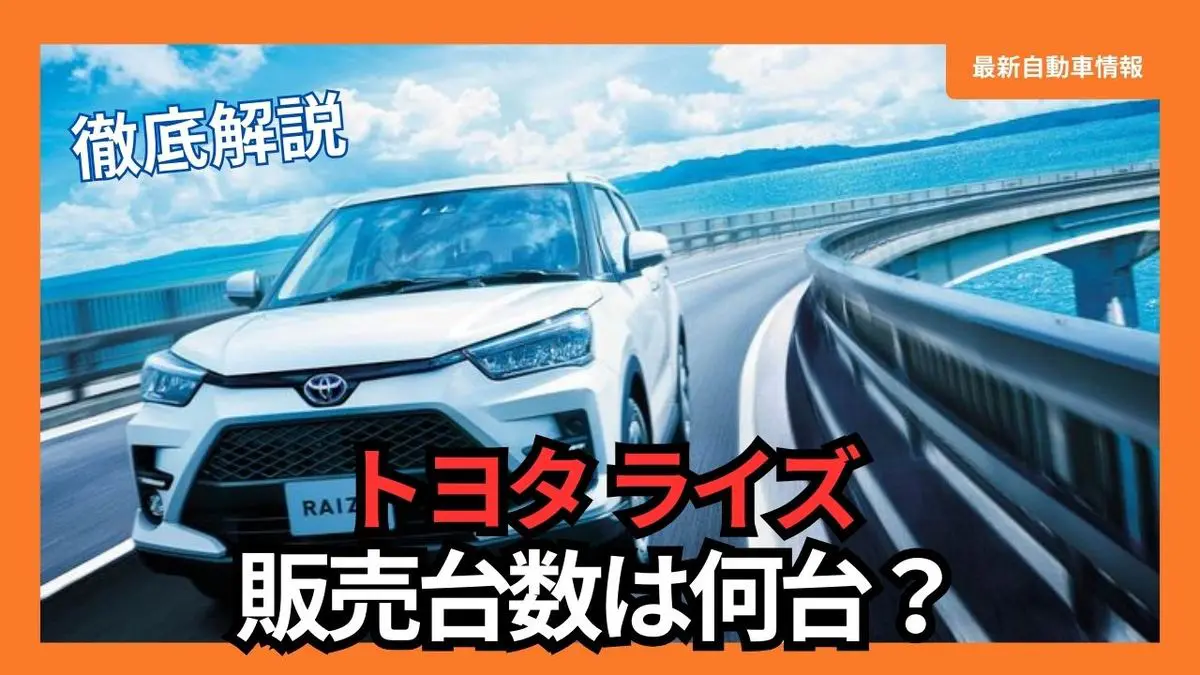
Toyota
Toyota Raise
